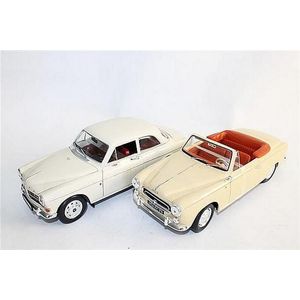Antique Kaleidoscope with Geared Mechanism and Engravings
A fine kaleidoscope, after the original by Wm. Leigh of Newton the cylindrical body tube with rack and pinion and worm screw geared mechanism, with an ebonised handle activating two independent periphery geared collar tubes rotating at different speeds and fitted with two mirror angle setting levers, each scale engraved from 6-12, supported on a compass joint with rack-work altitude adjustment on a mahogany and brass telescopic stand and tripod base with ebonised castors, levelling screws with acorn finials and two circular stretcher rings, the outer ring engraved 1. Who could, from thy outward case, half thy hidden beauties trace 2. Who from such exterior show, Guess the gems within that glow! 3. Emblem of the mind divine, cased within its mortal shrine., the inner ring engraved 'Original W. Leigh, Newton maker C.1822, replica G. Gyori, Melbourne' 41 cm high
You must be a subscriber, and be logged in to view price and dealer details.
Subscribe Now to view actual auction price for this item
When you subscribe, you have the option of setting the currency in which to display prices to $Au, $US, $NZ or Stg.
This item has been sold, and the description, image and price are for reference purposes only.
- Mahogany - Mahogany is a dense, close grained red-coloured timber from the West Indies and Central America. It was first imported into Europe in the the early 18th century and its use continued through the 19th century. It was popular for furniture making because of its strength, the wide boards available, the distinctive grain on some boards, termed flame mahogany and the rich warm colour of the timber when it was polished.. The "flame" was produced where a limb grew out from the trunk of the tree, and this timber was usually sliced into veneers for feature panels on doors, backs and cornices.
Some terms used to describe mahogany relate to the country from which it originally came, such as "Cuban" mahogany, "Honduras" mahogany etc. However unless the wood has been tested the names assigned are more a selling feature, rather than a true indication of the timber's origin. - Finial - An architectural decoration, found on the upper parts of of an object. On furniture they are usually found on pediments, canopies and shelf supports. On smaller ceramic or silver items, such as spoons, they may decorate the top of the item itself, or the lid or cover where they provide a useful handle for removal.
Finials have a variety of shapes and forms. They may be urn-shaped, baluster shaped round or spiral, but usually taper into an upper point. Many real life shapes may also be used as finials, such as pineapples, berries, pinecones, buds, lotus and acorns. Sometimes animals such as a lion are depicted, or fish and dolphins.
Visually similar items

A Revell 'Volvo 121 Amazon' and a Solido '1961 Peugeot 403 Cabriolet grand Luxe' (2)
Sold by
in
for
You can display prices in $Au, $US, $NZ or Stg.

An amethyst ring, 9ct yellow gold, antique, set as an unusual large dress piece, featuring a faceted, hexagonal shaped amethyst of medium bright purple colour, bezel set in a millgrained edge, set to a scooped band
Sold by
in
for
You can display prices in $Au, $US, $NZ or Stg.

Three cameo shells, Italian, Naples 19th century, 16 to 20 cm high
Sold by
in
for
You can display prices in $Au, $US, $NZ or Stg.

Antique treenware napkin ring, 5 cm diameter
Sold by
in
for
You can display prices in $Au, $US, $NZ or Stg.
